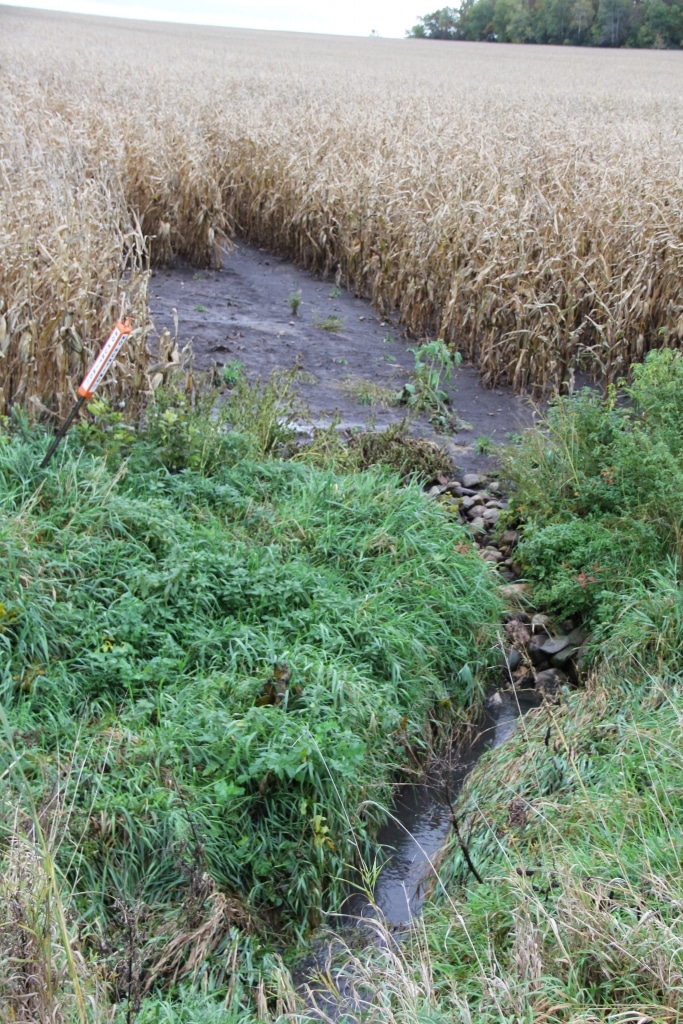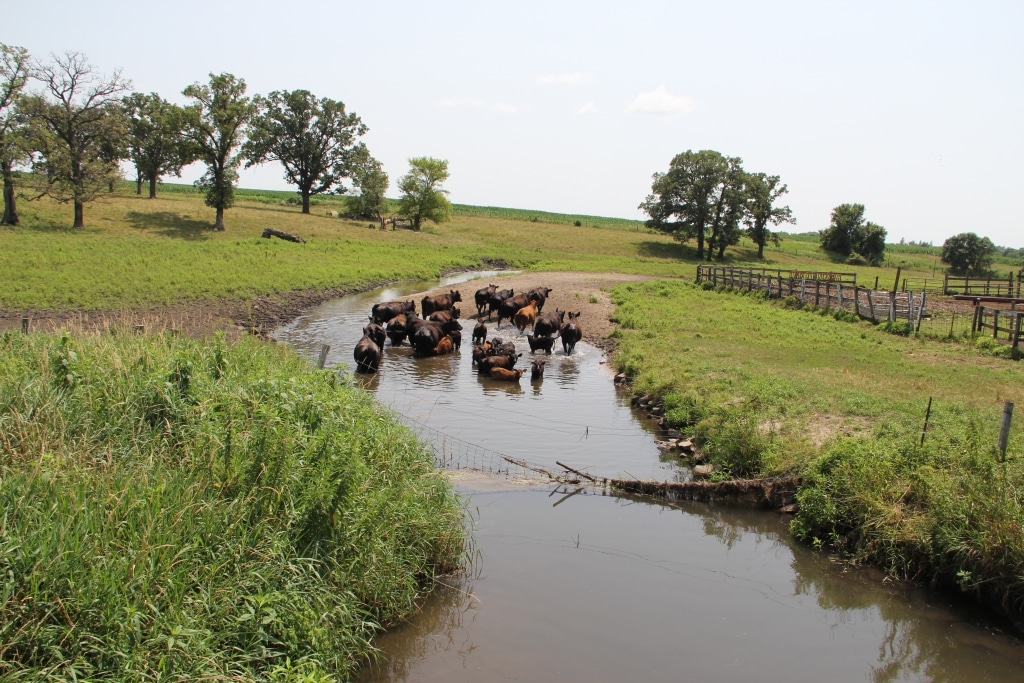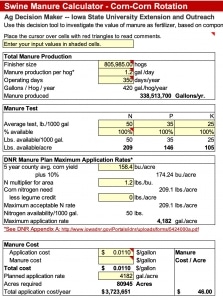Non-Point Source Pollution
Non-point source pollution is caused by rain or runoff carrying pollutants into surface or groundwater. Iowa’s primary pollutants are plant nutrients such as nitrogen and phosphorous from commercial fertilizers used in rural and urban areas. Because much of Iowa is rural, especially the Upper Wapsipinicon River Watershed, the primary sources of nutrients carried into waterways are derived from agricultural fields. In 2018, Iowa led all states in the US in corn production and ranked second in soybean production according to this USDA report and corn and soybeans remain the primary crops grown by Iowa producers.
The report goes on to say that today’s production methods, equipment, and the intensification of agricultural tiling associated with growing corn and soybean production have resulted in Iowa also being the top contributor of nutrients, nitrogen and phosphorous, to surface waters in the Upper Mississippi River Basin. Excessive nutrient loading in surface waters can create multiple problems. They can create issues when surface waters influence source waters. According to the Iowa DNR Source Water Protection Program, “Surface water is more susceptible to contamination incidents from natural or man-made causes, such as a flood or a chemical spill, but it also recovers much more quickly than does groundwater. Groundwater is much less susceptible to contamination, but when that happens, natural recovery is very slow to occur.” When high nitrogen levels exceed drinking water standards in city source waters, communities must treat water supplies, which can run into the millions of dollars per community. Iowa Source Water Protection. High nutrient levels in surface waters have also been cited as the primary cause of hypoxia in the Gulf of Mexico. The hypoxia zone or “Dead Zone” is a growing concern for coastal states reliant on the waters in the Gulf of Mexico as a productive fishery and economic resource.
The entire Wapsipinicon River (WR) contributed approximately 22.4 kg of nitrogen per watershed hectare (20 lbs per acre) annually from 1999 – 2016 to the Mississippi River, according to this study by IIHR. The study quantifies nutrient loads leaving Iowa through the major rivers. If we correlate these findings to the value or cost of nitrogen fertilizer in 2018, we can calculate the equivalent cost or value of the nitrogen as fertilizer, which would have been approximately $3.6 million annually. This nutrient transport represents a considerable economic loss. Improved soil health and in-field nutrient management, as well as urban conservation, could reduce the nutrient loss and thus the economic loss.
The close connection between surface and ground waters in the UWR Watershed, as described here, also makes the nutrient loading of surface waters significant, more so than many other watersheds in Iowa.

Utilizing ISU Extension calculation factors, the current hog population of the UWR Watershed produces an estimated 338,513,700 gallons of liquid manure annually, requiring 80,945 corn-corn rotation acres or nearly 10.7% of all the row crop acres in the UWR Watershed if applied at the highest acceptable permitted application rate of 4,182 gallons per acre. (Assumptions: 230,965 animal units in 2010; 322,394 animal units in 2018; One animal unit = 2.5 swine weighing more than 55 lbs; 758,537.1 crop acres in the Upper Wapsi River Watershed.)
If these acres in the UWR Watershed receive these quantities of liquid manure, they would be unlikely to need additional commercial fertilizer. Some subwatershed projects in Iowa have successfully helped producers appreciate soil fertility and nutrient management to reduce nutrient loss into surface waters. See Buffalo Creek Subwatershed Project in Buchanan County, which decreased nutrient loading in surface waters.
Point Source Pollution
Point source pollution is defined by the EPA as “any single identifiable source of pollution from which pollutants are discharged, such as a pipe, ditch.” Point source pollution has generally been associated with cities or industry.
